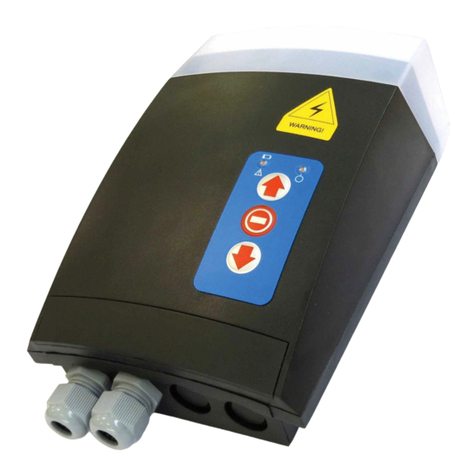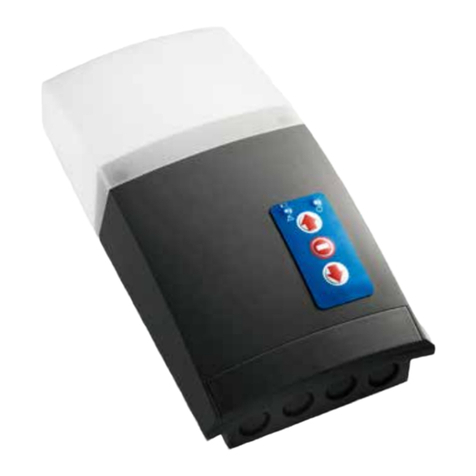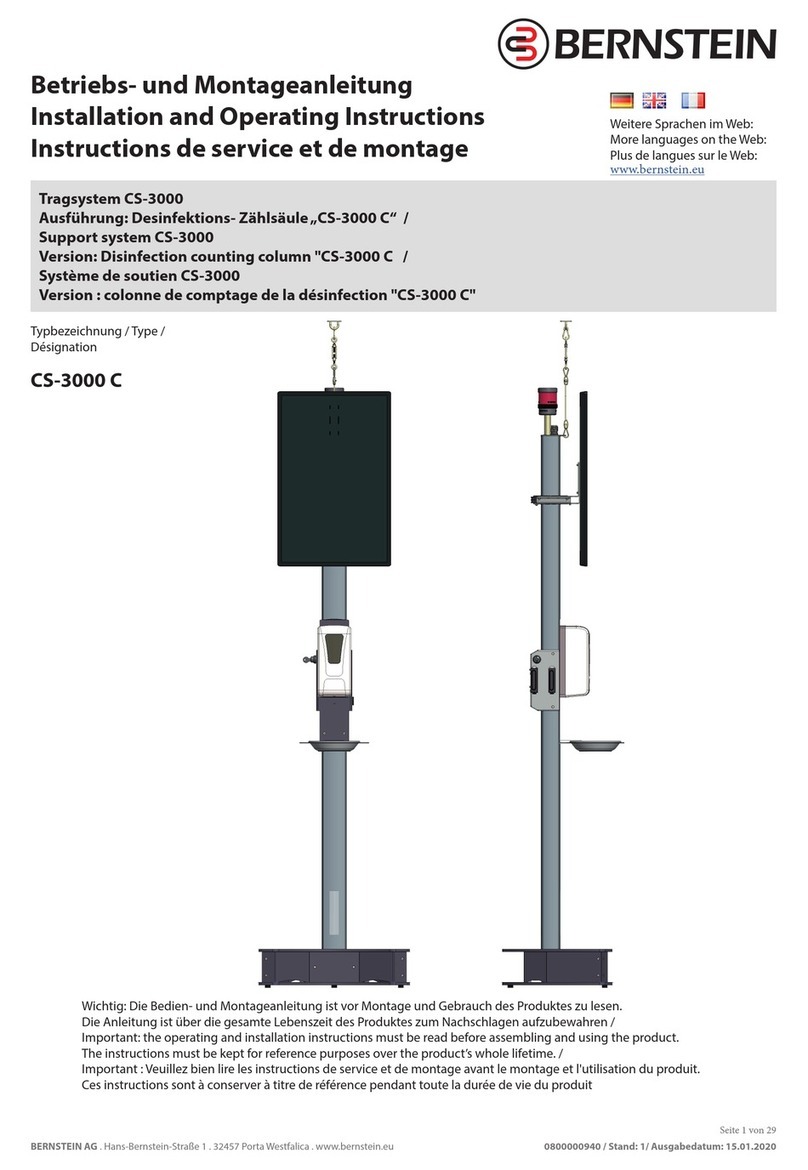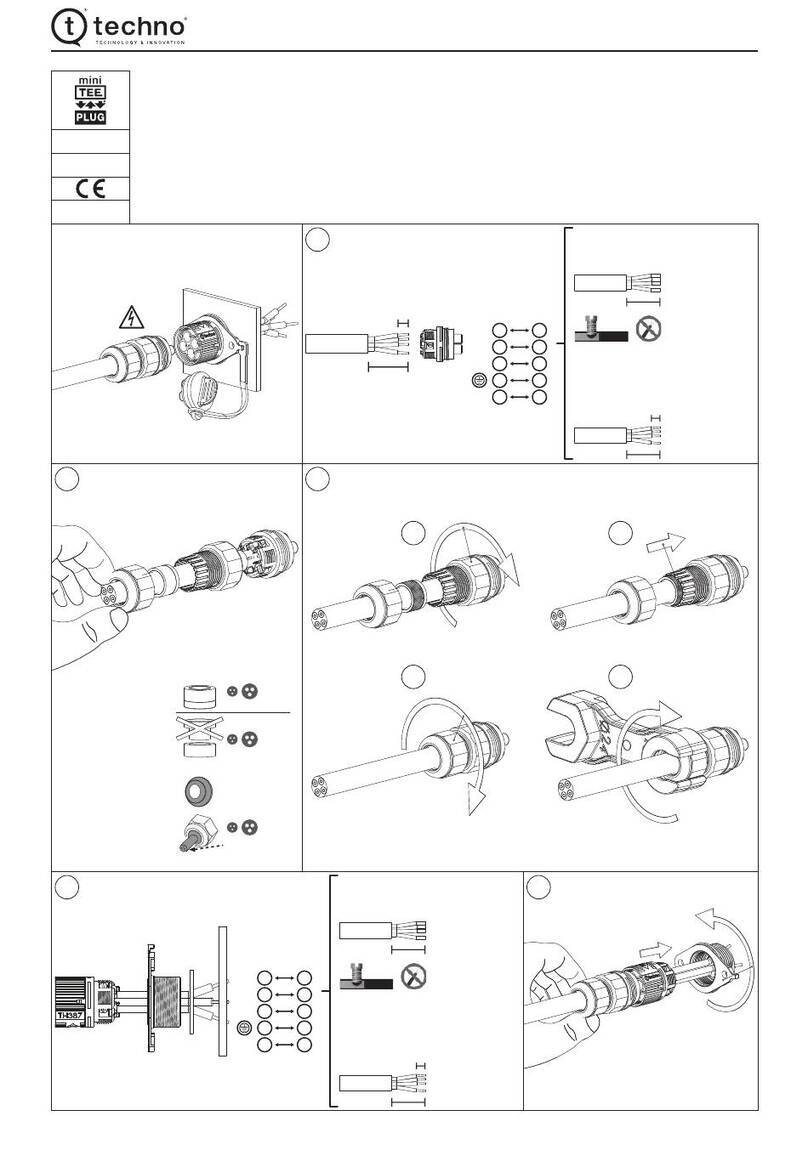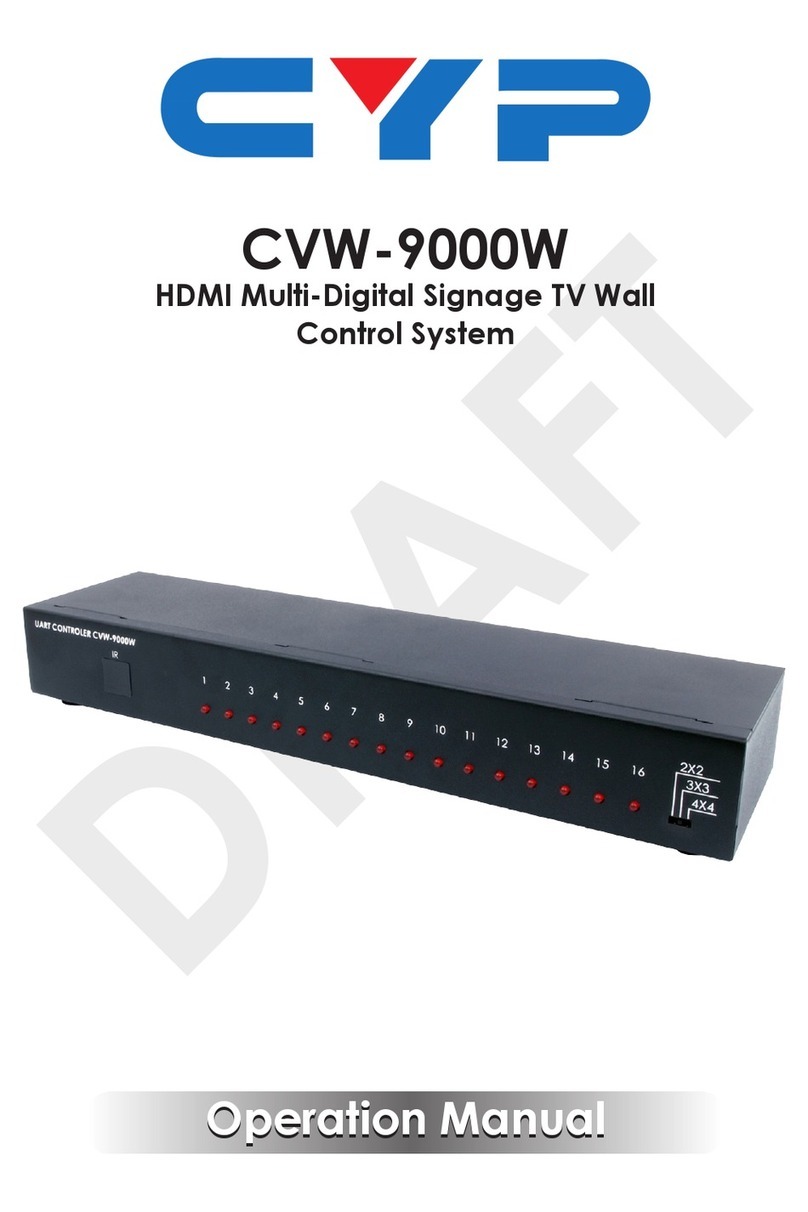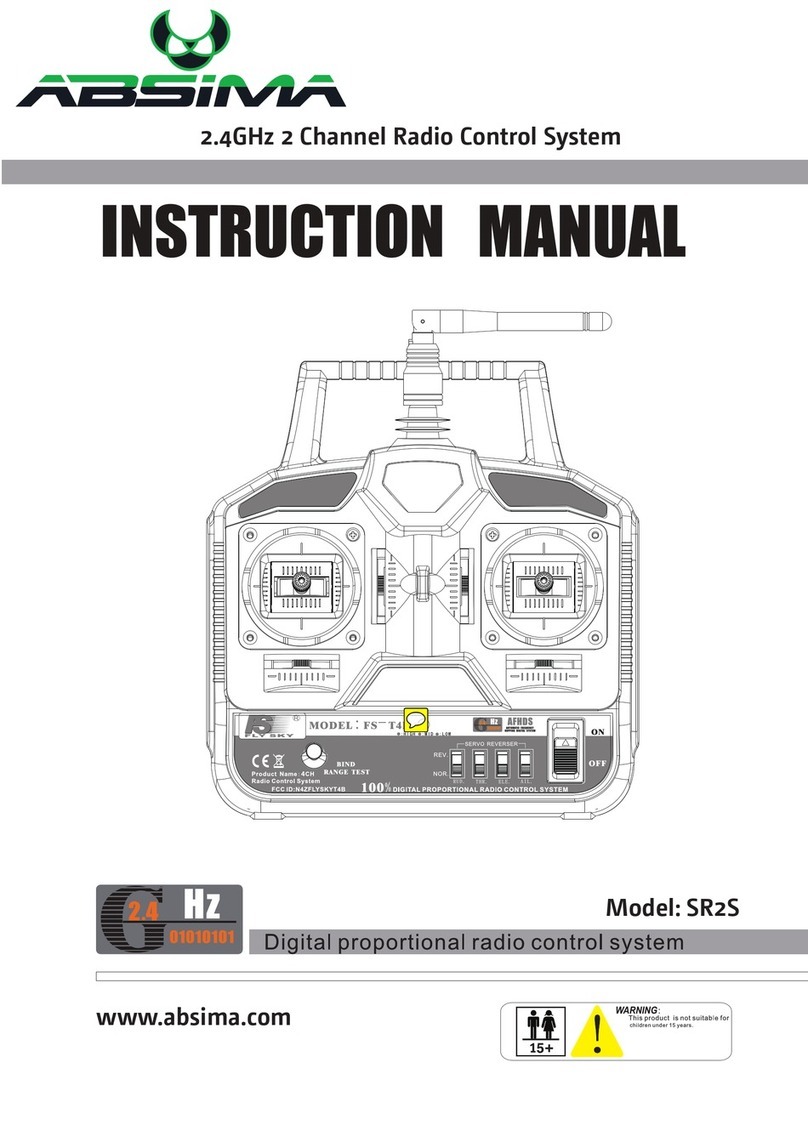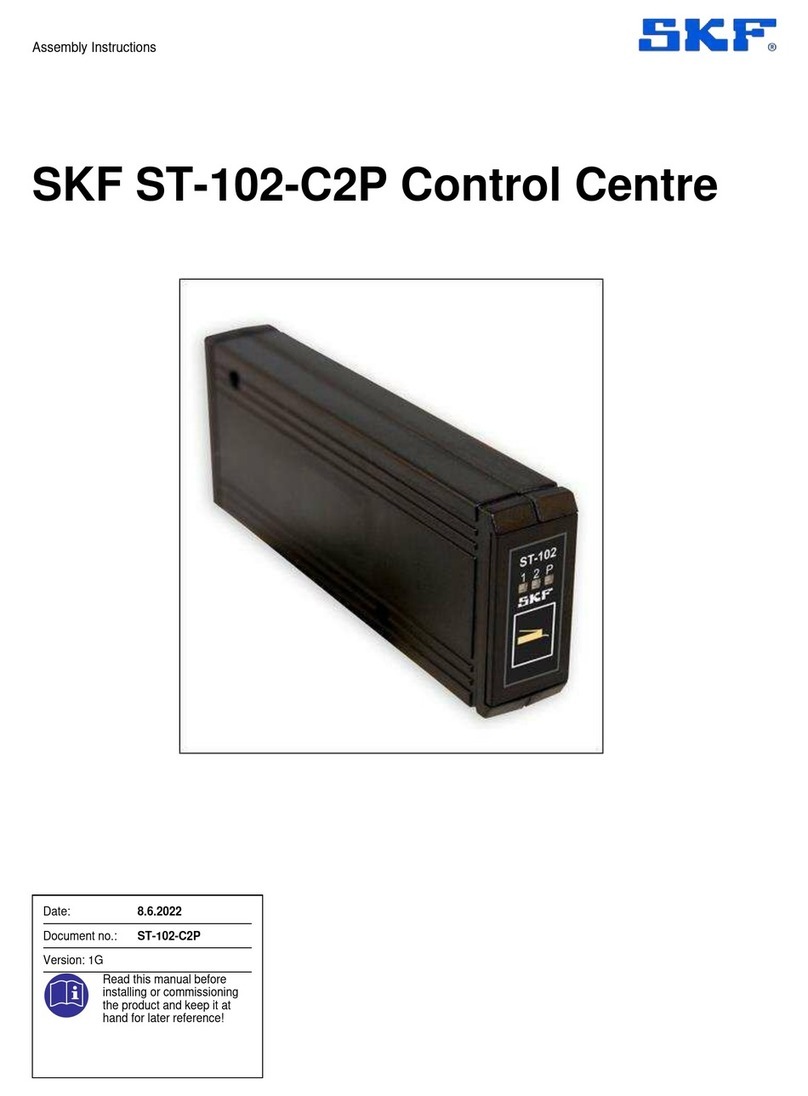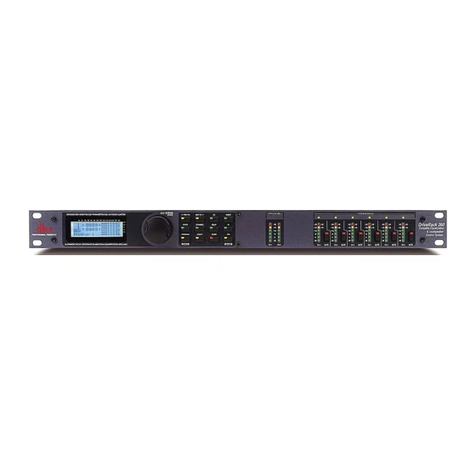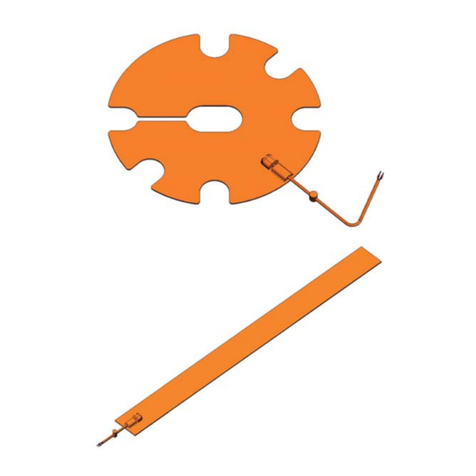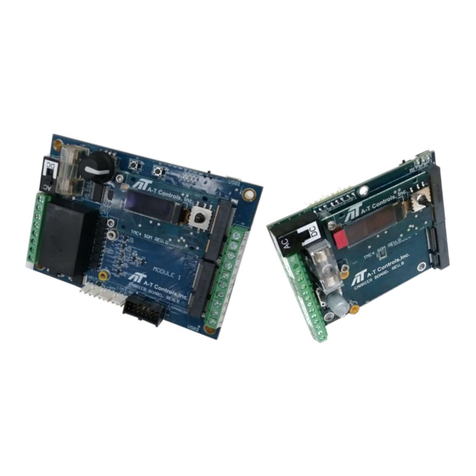TELECO AUTOMATION TVRDS868B01 User guide

Control system for garage doors
Installer’s instruction manual
Product:
TVRDS868B01
Doc:
T763.03
Date:
13/11/18

2
INDEX
1. PRODUCT DESCRIPTION --------------------------------------------------------------- p. 3
2. INSTALLATION ----------------------------------------------------------------------- p. 4 - 7
2.1 Mounting the product
2.2 Mounting the wireless safety system (BST24/BST25/BST25S)
2.3 Control unit diagram
2.4 Electrical connections
2.5 Wired safety device connections
3. PRELIMINARY CHECK AND INITIAL START-UP --------------------------------------- p. 8 - 10
3.1 Limit switch configuration
3.2 Deactivation of wireless safety system
3.3 Exclusion of safety edge in the last 5cm of the closure
3.4 Light output mode
4. TRANSMITTERS MEMORIZATION ------------------------------------------------------- p. 11 - 13
4.1 Single channel memorization
4.2 Double channel memorization
4.3 Single channel: Courtesy light ON/OFF
4.4 Four channels memorization
4.5 Remote memorization of the first transmitter
4.6 Remote memorization of further transmitters
4.7 Alarm function: shock sensor memorization
4.8 Single channel: door status request (“ASK”)
5. TRANSMITTERS DELETION ------------------------------------------------------- p. 14
5.1 Deleting a single transmitter
5.2 Deleting all the transmitters
5.3 Remote deletion of a transmitter
6. TIME SETTINGS ----------------------------------------------------------------------- p. 15
6.1 Auto close time setting
6.2 Courtesy light time setting
7. OTHER PROGRAMMING ------------------------------------------------------- p. 16
7.1 “Holiday mode”
7.2 Control unit reset
8. TECHNICAL SPECIFICATIONS ------------------------------------------------------- p. 17
8.1 WARNINGS
9. TROUBLESHOOTING (What to do if...) ----------------------------------------------- p. 18 - 19

3
TVRDS868B01
Control unit with integrated radio receiver for the remote control of tubular motors up to
700W, with built-in limit switch, for rolling shutters and rolling doors.
W
i
r
e
l
e
s
s
s
a
f
e
t
y
s
y
s
t
e
m
F
r
o
n
t
c
o
v
e
r
w
i
t
h
b
u
t
t
o
n
s
a
n
d
L
E
D
1. PRODUCT DESCRIPTION
FEATURES
Compact plastic case with easy fixing and LED for alarms/status
Front cover with buttons for programming and up/stop/down commands
Integrated LED courtesy light
Wireless control via radio transmitters
Wireless safety edge with auto-test.
Bidirectional communication: door status is shown by the transmitter LED with different colour
Alarm function, in combination with shock sensor (TVSSH868A01 and BST25S) and integrated
speaker
CONNECTIONS & FUNCTIONING
Wide room for wiring and easy cable lock without need of cable glands
Wired inputs for photocells and safety edge (both resistive 8K2 and infrared)
Wired inputs for command push-button and emergency STOP push-button
Possibility to connect an external 230V~ flashing light (activated just during the manoeuvre) or
courtesy light.
2 Functioning modes: semi-automatic (automatic opening + hold-to-run closing) and automatic
Automatic closing with programmable pause time
Exclusion of the safety edge in the last part of the closure, in case of bumpy floor
“Holiday mode” to lock the control unit with the front cover
W
i
r
e
l
e
s
s
s
y
s
t
e
m
e
a
s
y
t
o
c
o
n
n
e
c
t
I
n
t
e
g
r
a
t
e
d
L
E
D
c
o
u
r
t
e
s
y
l
i
g
h
t
W
i
d
e
r
o
o
m
f
o
r
w
i
r
i
n
g
a
n
d
e
a
s
y
c
a
b
l
e
l
o
c
k
S
a
f
e
t
y
e
x
c
l
u
s
i
o
n
Max.
5 cm

4
2.1 Mounting the product
OPENING THE COVER
1. Remove the screw.
2. Lift the lid up.
BOX DIMENSIONS
FRONT SIDE REAR
screw
65 mm165 mm
220 mm
150 mm
130 mm

5
2.2 Mounting the wireless safety system (BST24/BST25/BST25S)
?
?
?
?
?
?
We recommend installing at the base of the door, on both
side of the safety edge, two rigid bumpers. In case of
uneven floors, this can avoid an accidental activation of the
safety edge. If it’s not possible use the procedure 3.3.
The system is composed by a radio card (MASTER), plugged in the control unit, and a wireless transmitter
(SLAVE) mounted on the door, usually close to the bottom slat, connected to the safety device.
The device has got infrared low-consumption barrier (both safety systems), or 8,2KOhm resistive barrier safety
edge (only for BST24/BST25). If an obstacle is detected during the closing, the SLAVE sends a signal to the
MASTER that immediately stops the door and reverses its movement. The system performs an auto-test before
any movement.
?
?
?
OK
RIGID BUMPERS
FLOOR
RADIO CARD (MASTER)
Install both the control unit and bottom slat transmitter
inside. Make sure that there are no obstructions
between devices. Check that the maximum distance
between the devices is no more than 10m.
1
BK2
2 3 4 5 6
BK2
1 2
1
BK2
2 3 4 5 6
BK2
1 2
2
2
1
1
BK2
2 3 4 5 6
BK2
1 2
1
1
2
1
BK2
2 3 4 5 6
BK2
1 2
1
BK2
2 3 4 5 6
BK2
1 2
2
2
1
1
BK2
2 3 4 5 6
BK2
1 2
1
1
2
1
BK2
2 3 4 5 6
BK2
1 2
1
BK2
2 3 4 5 6
BK2
1 2
2
2
1
1
BK2
2 3 4 5 6
BK2
1 2
1
1
2
1
BK2
2 3 4 5 6
BK2
Green
Brown
White
1 2
1
BK2
2 3 4 5 6
BK2
Green
Brown
White
1
3
1
BK2
2 3 4 5 6
BK2
1 2
1
BK2
2 3 4 5 6
BK2
Green
Brown
White
2
a b
+
B1
-
B2
3 4 5 6
BK2
1 2
+ -
- +
+ -
- +
+
B1
-
B2
3 4 5 6
BK2
1 2
a
b
+
B1
-
B2
3 4 5 6
BK2
1 2
+ -
- +
BOTTOM SLAT TRANSMITTER (SLAVE)
Powered by:
led *
dip switches **
+
B1
-
B2
34 56
BK2
12
+-
-+
+-
-+
+
B1
-
B2
34 56
BK2
12
2 x 3.6V
Lithium batteries
2 x 1.5V
Type AA batteries
1
BK2
2 3 4 5 6
BK2
Green
Brown
White
1 2
1
BK2
2 3 4 5 6
BK2
Green
Brown
White
1
3
1
BK2
2 3 4 5 6
BK2
1 2
1
BK2
2 3 4 5 6
BK2
Green
Brown
White
2
a b
+
B1
-
B2
3 4 5 6
BK2
1 2
+ -
- +
+ -
- +
+
B1
-
B2
3 4 5 6
BK2
1 2
a
b
+
B1
-
B2
3 4 5 6
BK2
1 2
+ -
- +
1
BK2
2 3 4 5 6
BK2
Green
Brown
White
1 2
1
BK2
2 3 4 5 6
BK2
Green
Brown
White
1
3
1
BK2
2 3 4 5 6
BK2
1 2
1
BK2
2 3 4 5 6
BK2
Green
Brown
White
2
a b
+
B1
-
B2
3 4 5 6
BK2
1 2
+ -
- +
+ -
- +
+
B1
-
B2
3 4 5 6
BK2
1 2
a
b
+
B1
-
B2
3 4 5 6
BK2
1 2
+ -
- +
Opening the lid
1. Remove the screws.
2. Lift the lid up.
Closing the lid
1. Place the lid.
2. Tighten the screws.
Fixing the
transmitter
Use the screws and
the holes in the picture.
Insert batteries and
check polarity.
INFRARED SAFETY EDGE RESISTIVE SAFETY EDGE
1 2
ON
DIP1 = ON
1 2
ON
DIP2 = ON
1
BK2
2 3 4 5 6
BK2
Green
Brown
White
1 2
1
BK2
2 3 4 5 6
BK2
Green
Brown
White
1
3
1
BK2
2 3 4 5 6
BK2
1 2
1
BK2
2 3 4 5 6
BK2
Green
Brown
White
2
a b
+
B1
-
B2
3 4 5 6
BK2
1 2
+ -
- +
+ -
- +
+
B1
-
B2
3 4 5 6
BK2
1 2
a
b
+
B1
-
B2
3 4 5 6
BK2
1 2
+ -
- +
1
BK2
2 3 4 5 6
BK2
Green
Brown
White
1 2
1
BK2
2 3 4 5 6
BK2
Green
Brown
White
1
3
1
BK2
2 3 4 5 6
BK2
1 2
1
BK2
2 3 4 5 6
BK2
Green
Brown
White
2
a b
+
B1
-
B2
3 4 5 6
BK2
1 2
+ -
- +
+ -
- +
+
B1
-
B2
3 4 5 6
BK2
1 2
a
b
+
B1
-
B2
3 4 5 6
BK2
1 2
+ -
- +
1
ON
B2B1
2
++
P1
6 5 4 3
8K2
6 5 4 3
4- GREEN
5- BROWN
6- WHITE
3 4 5 6
BK2
Green
Brown
White
1 2
a
3 4 5 6
BK2
Green
Brown
White
b
1 2
P1
L3
L2
L1
1
BK2
2 3 4 5 6
BK2
Green
Brown
White
1 2
1
BK2
2 3 4 5 6
BK2
Green
Brown
White
1
3
1
BK2
2 3 4 5 6
BK2
1 2
1
BK2
2 3 4 5 6
BK2
Green
Brown
White
2
a b
+
B1
-
B2
3 4 5 6
BK2
1 2
+ -
- +
+ -
- +
+
B1
-
B2
3 4 5 6
BK2
1 2
a
b
+
B1
-
B2
3 4 5 6
BK2
1 2
+ -
- +
1
BK2
2 3 4 5 6
BK2
Green
Brown
White
1 2
1
BK2
2 3 4 5 6
BK2
Green
Brown
White
1
3
1
BK2
2 3 4 5 6
BK2
1 2
1
BK2
2 3 4 5 6
BK2
Green
Brown
White
2
a b
+
B1
-
B2
3 4 5 6
BK2
1 2
+ -
- +
+ -
- +
+
B1
-
B2
3 4 5 6
BK2
1 2
a
b
+
B1
-
B2
3 4 5 6
BK2
1 2
+ -
- +
1
ON
B2B1
2
++
P1
6 5 4 3
8K2
6 5 4 3
4- GREEN
5- BROWN
6- WHITE
3 4 5 6
BK2
Green
Brown
White
1 2
a
3 4 5 6
BK2
Green
Brown
White
b
1 2
P1
L3
L2
L1
1 2
ON
DIP1 = OFF
Infrared test activated for
30 s. Any beam interruption
turns the led ON .
*
*
*
(*) Only for BST24 / BST25

6
2.3 Control unit diagram
1 - High voltage terminals
2 - Low voltage terminals
3 - 5A fuse
4 - Aerial connection
5 - Programming/command buttons
6 - Dip switches
7 - Status/alarm LED
8 - LED courtesy light
9 - Socket for radio card (MASTER)
10 - Alarm buzzer output
11 - Manoeuvre relays
12 - Common relay
13 - Transformer
14 - Ground terminal
2.4 Electrical connections
High voltage terminals
# CONNECTION
1 Motor Ground
2 230V~ Power supply - Ground
3 230V~ Power supply IN - LIVE
4 230V~ Power supply IN - NEUTRAL
5 Motor - OPEN
6 Motor - COMMON
7 Motor - CLOSE
8230V~ LIGHT OUTPUT
(300W max. lamp)
9
# CONNECTION
12 Photocells power supply (+12V)
13 Safety common (COM)
14 Photocells power supply (0V)
15 N.C. contact FTC (photocells)
16 Infrared/8K2 safety edge input (brown)
17 Infrared/8K2 safety edge input (green)
18 Infrared/8K2 safety edge input (white)
19 Push-button common (COM)
20 Push-button (step-by-step, N.O.)
21 Emergency STOP push-button (N.C.)
22 Emergency STOP push-button common
Wired
infrared/8K2
safety edge
Emergency
STOP (TB)
Low voltage terminals
Push-
button
(TD)
Wired
photocells
< -- see pag. 7 for connections -- >
Open COM Close
MOTOR
230V
Line IN
GND LIGHT
output
Via dell'Artigianato, 16 - 31014 Colle Umberto (TV) ITALY
Tel. +39.0438.388511 Fax +39.0438.388536
Web site: www.telecoautomation.com
DATE: 02/03/17 REV: 1.0
ETI-MORS-RDSB02
Da stampare a colori
L N
1
4
5
2
3
6
7
8
9 10
11 13
12
14 3 4 5 6 7 8 9 12 13 14 15 16 17 18 19 20 21 22
TB COM
COM TD
Via dell'Artigianato, 16 - 31014 Colle Umberto (TV) ITALY
Tel. +39.0438.388511 Fax +39.0438.388536
Web site: www.telecoautomation.com
DATE: 02/03/17 REV: 1.0
ETI-MORS-RDSB02
Da stampare a colori

7
2.5 Wired safety device connections
Infrared (IR) safety edge 8.2Kohm resistive safety edge
Connect a 8K2 resistor between terminals 16 and 17.
Terminals 14 and 15 must be closed by a jumper.
Terminals 21 and 22 must be closed by a jumper.
If no wired safety edge is used, connect a 8K2 resistor between terminals 16 and 17.
Reflex photocell Pair of standard photocells (N.C.)
If no photocells are used, terminals 14 and 15 must be closed by a jumper.
NO WIRED SAFETY DEVICE CONNECTED
12 13 14 15 16 17 18 19 20 21 22 23
16- BROWN
17- GREEN
18- WHITE
12 13 14 15 16 17 18 19 20 21 22 23
8K2
0V
12V
24V
N.O.
COM
N.C.
0V
12V
24V
12 13 14 15 16 17 18 19 20 21 22 23 12 13 14 15 16 17 18 19 20 21 22 23
RX FTC010
TX FTC010
REFLEX
+
-
COM
N.C.
12Vdc - 15Vdc
12 13 14 15 16 17 18 19 20 21 22 23
8K2

8
3. PRELIMINARY CHECK AND INITIAL START-UP
• Step 1: motor limit switch setting
Once the limit switches are set connect the motor to control unit and start the system up.
The buzzer emits 3 quick sounds if the memory is empty or 1 long sound if the memory has radio codes in.
• Step 2: motor connection and powering the board up
After the power-on, the control unit executes only opening commands until the door is fully opened.
Check the direction of the door; if the door is travelling in the wrong direction:
1- STOP the manoeuvre
2- Switch the control unit off
3- Swap BLACK and BROWN motor wires over - terminals 5 & 7
4- Power the board up again
Check that the bottom slat transmitter (SLAVE) is supplied by the batteries, the voltage selector is in the right
position and all the connections are correctly made, as decribed at par. 2.2.
• Step 3: activation of the wireless safety device system
1- Push the button of the radio card (MASTER) for 2 seconds, L1 and L2 led will flash.
2- Push the button of the bottom slat transmitter (SLAVE) for 2 seconds. Its led will flash.
In case of correct memorization L1 will costantly flash.
Check the system pressing the button of the bottom slat transmitter (SLAVE) and keeping it pressed:
- Slave led solid ON = OK
- Slave led flashing = No wireless communication
- Master L1 led must costantly flash
In case of problem, the system can be totally excluded with the procedure 3.3.
WARNING: the control unit executes a brief inversion of the movement (1 second) if any error occurs.
In case that the safety devices (except for TB input) are defective or they have been activated, it is
possible to operate the door anyway, keeping pressed the command button for more than 5 seconds.
The control unit will automatically switch to hold-to-run mode.
In case of any problem, refer to the paragraph “Troubleshooting” (par. 9).
• Step 4: functioning mode
RADIO CARD
(MASTER)
BOTTOM SLAT
TRANSMITTER
(SLAVE)
button
1
BK2
2 3 4 5 6
BK2
Green
Brown
White
1 2
1
BK2
2 3 4 5 6
BK2
Green
Brown
White
1
3
1
BK2
2 3 4 5 6
BK2
1 2
1
BK2
2 3 4 5 6
BK2
Green
Brown
White
2
a b
+
B1
-
B2
3 4 5 6
BK2
1 2
+ -
- +
+ -
- +
+
B1
-
B2
3 4 5 6
BK2
1 2
a
b
+
B1
-
B2
3 4 5 6
BK2
1 2
+ -
- +
led button
1 2 3
ON
1 2 3
ON
1 2 3
ON
1 2 3
ON
A proper connection box should be used to set the limit switch before wiring the motor in the control unit
or follow the procedure described on par. 3.1.
DIP2 ON: AUTOMATIC mode.
OFF: SEMI-AUTOMATIC mode. Automatic opening and hold-to-run closing.
The automatic closure function is deactivated.
DIP2=DIP3 ON: Automatic closure function activated. Default time is 30 sec.
This function has effect only when the door is totally open.
DIP3 OFF: Automatic closure function deactivated (default setting).
L3 led
L2 led
L1 led

9
3.1 Limit switches configuration
Open the door (in hold-to-run mode) in order
to set up the upper limit switch.
Close the door (in hold-to-run mode) in order
to set up the down limit switch.
hold-to-run
DEACTIVATION
P2
( 5 s)
keep it
pressed Press P2 button five times and keep it
pressed for at least 5 seconds. L7 starts
flashing.
Press P2 button twelve times and keep it
pressed for 5 seconds. The buzzer emits 1
beep and L7 flash fast.
L7 flashes
slow
...
( 5 s)
keep it
pressed
HOLD TO RUN
L7 FLASH FAST
( 5 s)
keep it
pressed
L7 flashes
slow
...
( 5 s)
keep it
pressed
Press P2 button five times and keep it
pressed for at least 5 seconds. L7 starts
flashing slow.
Press P2 button thirteen times and keep
it pressed for 5 seconds. The buzzer emit
2 beeps.
hold-to-run
5x
12x
5x
13x
WITHIN 30 SEC.
FROM POWER-ON
P2
P2
P2
Procedure only with hold to run commands. Warning: The safety devices are excluded!
ON
1 2 3
ON
1 2 3
ON
3.2 Deactivation of wireless safety system
This function is possible ONLY within 30 seconds from the power on of the control unit.
By default DIP1 is ON (system activated).
• Switch the unit on and move DIP1 to OFF within 30 seconds.
ON to OFF
The control unit will emit 6beeps if the system has been correctly deactivated.
It is possible activate the safety system again, moving DIP1 from OFF to ON within 30 seconds from
power-on. After keeping pressed P2 button for 5 seconds, the control unit will emit 7beeps.
• Press P2 button for 5 seconds and hold it down

10
3.3 Exclusion of safety edge in the last 5 cm of the closure
In case of uneven floors, it could be necessary deactivating the safety edge in the last part of the closure (not
more than 5 cm to comply with the standards) in order to avoid any accidental activation of the safety edge.
This procedure must be performed by qualified installer only, who will take charge of its correct application.
WARNING: this procedure can be used only for doors which require more than 10 seconds each manoeuvre. The
exclusion of the safety edge is applied only if the closure starts from the upper limit switch and it is not stopped.
Open the door completely by means of
a memorized transmitter. The buzzer emits
a long beep when the upper limit switch is
reached. Put on the floor, exactely under the
door, a sturdy object not more than 5 cm high.
Close the door (in hold-to-run mode), with
no interruption. The door will stop at the
obstacle and the control unit will make a
long beep. Open the door completely and
remove the object. Close the door to verify the
correct application of the procedure.
hold-to-run
DEACTIVATION
( 5 s)
keep it
pressed Press P2 button five times and keep it
pressed for at least 5 seconds. L7 starts
flashing.
Press P2 button ten times and keep it
pressed for 5 seconds. The buzzer emits
3 beeps.
WITHIN 30 SEC.
FROM POWER-ON
L7 flashes
...
( 5 s)
keep it
pressed
( 5 s)
keep it
pressed
L7 flashes
...
( 5 s)
keep it
pressed
Press P2 button five times and keep it
pressed for at least 5 seconds. L7 starts
flashing.
Press P2 button eleven times and keep it
pressed for 5 seconds. The buzzer emits 5
beeps.
5x
10x
5x
11x
WITHIN 30 SEC.
FROM POWER-ON
P2
P2
P2
P2
max. 5 cm
X
3.4 LIGHT OUTPUT MODE Factory setting
FLASH OUTPUT
( 5 s)
keep it
pressed Press P2 button five times and keep it
pressed for at least 5 seconds.
Press P2 button fourteen times and keep
it pressed for 5 seconds. The buzzer emits
1 beep.
( 5 s)
keep it
pressed
P2
P2 14x
...
MODE: COURTESY LIGHT
( 5 s)
keep it
pressed Press P2 button five times and keep it
pressed for at least 5 seconds.
Press P2 button fifteen times and keep it
pressed for 5 seconds. The buzzer emits
2 beeps.
( 5 s)
keep it
pressed
5x
P2
P2 15x
...
MODE: FLASH OUTPUT
5x

11
4.1 Single channel memorization
Memorization of a single button of any transmitter,
with function OPEN - STOP - CLOSE
Press P2 once and keep it pressed.
The buzzer emits a continuous sound.
Press any button to memorize.
Once the memorization is successfully completed,
the buzzer emits a fast intermittent sound.
P2
continuous sound
...
( )
keep it pressed
intermittent sound
button to
memorize
OPEN - STOP - CLOSE ►
4. TRANSMITTER MEMORIZATION
In order to carry the transmitter memorization out it is necessary use the P2 button of the
front cover, entering the “programming mode” first.
WARNING: always check that L7 is flashing before carry the following memorizations out!
If no further button is pressed within 10 seconds the control unit exits automatically the programming mode.
Press P2 five times and keep it pressed
for at least 5 seconds. L7 starts flashing.
( 5 s )
keep it pressed
P2
ENTERING THE PROGRAMMING MODE
P2
(STOP)
L7 flashes
...
P2
(STOP)
5x
4.3 Single channel: courtesy light ON/OFF
Memorization of a single button of any transmitter,
with function LIGHT ON - LIGHT OFF
Press P2 three times and keep it pressed.
The buzzer emits a continuous sound.
Press any button of the pair to memorize.
Once the memorization is successfully completed,
the buzzer emits a fast intermittent sound.
continuous sound
...
( )
keep it pressed
intermittent sound
P2
4.2 Double channel memorization
Memorization of two buttons of any transmitter in one
step, with function OPEN (STOP) - CLOSE (STOP)
Press P2 twice and keep it pressed.
The buzzer emits a continuous sound.
Press any button of the pair to memorize.
Once the memorization is successfully completed,
the buzzer emits a fast intermittent sound.
continuous sound
...
( )
keep it pressed
intermittent sound
P2
button to
memorize
button to
memorize
OPEN (STOP) ►
CLOSE (STOP) ►
LIGHT ON - LIGHT OFF ►
2x
3x

12
4.4 Four channels memorization
Memorization of four button transmitter in one step.
Press P2 six times and keep it pressed.
The buzzer emits a continuous sound.
Press any button of the transmitter to memorize.
Once the memorization is successfully completed,
the buzzer emits a fast intermittent sound.
continuous sound
...
( )
keep it pressed
intermittent sound
button to
memorize
OPEN ►
CLOSE ►
STOP ►
LIGHT ON - LIGHT OFF ►
4.6 Remote memorization of further transmitters
P3
The added transmitter will have the same functions of the transmitter used for the memorization.
This procedure is compatible with any type of transmitter.
Press once P3 button (twice if
within 30 seconds from power
on) of a memorized transmitter
for 2 sec. The buzzer emits a
continuous sound.
Press the button of a transmitter
already memorized. The buzzer
stops for 1 second, then sound
continously again.
Press the button of a new transmitter to memorize
with the same functions. Once the memorization
is successfully completed, the buzzer emits a fast
intermittent sound.
P3 button is
located inside the
transmitter
1 s< 5 s
...
< 5 s
continuous
sound intermittent sound
continuous
soundmemorized new
memorized
4.5 Remote memorization of the first transmitter
The memory must to be empty in order to perform this procedure.
The added transmitter will have the double-channel function.
OPEN (STOP) ►
CLOSE (STOP) ►
P3
Press once P3 button of a transmitter for 2
sec. within 30 seconds from power on.
The buzzer emits a continuous sound.
Press any button of the pair to memorize. Once
the memorization is successfully completed,
the buzzer emits a fast intermittent sound.
P3 button is
located inside the
transmitter
< 5 s
...
continuous
sound intermittent sound
new
6x
ON
P2

13
(CH4)
In case of using bidirectional transmitters it’s possible
to receive a feedback about the door status, shown by
means of the transmitter’s LED:
- Red led: open door
- Blue led: closed door
- Flashing led: missing feedback
Warning: the remaining free buttons of the transmitter
should be memorized using the procedures 4.1, 4.2 or 4.3.
4.8 Single channel: door status request (“ASK”)
TRTXI868xx04TRTXP868x04
DOOR STATUS REQUEST (“ASK”)
ASK
Press P2 seven times and keep it pressed.
The buzzer emits a continuous sound.
Press any button of TRTXP or CH4 of TRTXI.
Once the memorization is successfully completed,
the buzzer emits a fast intermittent sound.
continuous sound
...
( )
keep it pressed
intermittent sound
button to
memorize
4.7 Alarm function: shock sensor memorization
The wireless shock sensor (optional) detects any
attempt of breaking or entering and send a signal
to the control unit that will activate the speaker
(optional) for 1 minute. L6 flashes. It is possible
to set the sensor sensitivity by means of the dip
switches (see at side). Sending any opening or
closing door command will stop the alarm.
Warning: optional speaker must be connected!
ON
2
1
Press P2 eight times and keep it pressed.
The buzzer emits a continuous sound.
Activate the shock sensor.
Once the memorization is successfully completed,
the buzzer emits a fast intermittent sound.
continuous sound
...
( )
keep it pressed
intermittent sound
DIP1 DIP2 Sensitivity
Off Off High
On Off Medium
Off On Low
On On Extra-low
TVSSH868A01
ACTIVATE THE
SHOCK SENSOR
Only for TVSSH868A01 (with BST25S is not
necessary the shock sensor memorization).
The garage door must
be completly close.
8x
7x
P2
P2

14
5. TRANSMITTERS DELETION
5.1 Deleting a single transmitter
Press P2 four times and keep it pressed.
The buzzer emits an intermittent sound.
Press the button of the transmitter to delete.
Once the deletion is successfully completed,
the buzzer emits a continuous sound.
continuous sound
...
( )
keep it pressed
intermittent sound
P2
button to
delete
5.2 Deleting all the transmitters
Press P2 five times and keep it pressed for at
least 10 seconds.
The buzzer emits an intermittent sound.
Release the button once the sound becomes
continuous.
continuous sound
...
( 10 s )
keep it pressed
intermittent sound
P2
after
10 seconds
Press 3 times P3 button of a
memorized transmitter and keep it
pressed for 2 sec. The buzzer emits a
slow intermittent sound.
Press the button of the transmitter
to delete within 5 sec.
Once the deletion is successfully completed,
the buzzer emits a continuous sound.
< 5 s
...
intermittent sound
continuous
sound
to delete
5.3 Remote deletion of a transmitter
In order to carry the transmitter deletion out it is necessary use the P2 button of the front
cover, entering the “programming mode” first.
P3
P3 button is
located inside the
transmitter
memorized
WARNING: always check that L7 is flashing before carry the following deletions out!
If no further button is pressed within 10 seconds the control unit exits automatically the programming mode.
Press P2 five times and keep it pressed
for at least 5 seconds. L7 starts flashing.
( 5 s )
keep it pressed
P2
ENTERING THE PROGRAMMING MODE
L7 flashes
...
P2
(STOP)
5x
4x
5x
3x

15
6.1 Auto close time setting
This procedure configures the time lapse between complete opening and the automatic closure (if enabled).
The default time is 30 seconds. It is possible to set the time from 5 seconds to 180 seconds.
Press P3 button of a memorized transmitter and keep it pressed for 5 seconds. The buzzer will emit one beep.
Release and press it again eight times within 5 seconds and keep it pressed for 2 seconds. The buzzer will make two
beeps at the end. In case of time-out, the control unit will sound four beeps and exit the procedure automatically.
Press once P3 to start the counting of time. The buzzer will make one beep.
Press again P3 to stop the counting after the desired lapse. The value will be memorized by the control unit.
START STOP
6.2 Courtesy light time setting
This procedure configures the time of activation of the courtesy light (internal and external, if present).
The default time is 90 seconds. It is possible to set the time from 60 seconds to 12 hours.
within 5 sec.
8x
keep it (*)
pressed
( 5 s)
Press P3 button of a memorized transmitter and keep it pressed for 5 seconds. The buzzer will emit one beep.
Release and press it again five times within 5 seconds and keep it pressed for 2 seconds. The buzzer will make three
beeps at the end. In case of time-out, the control unit will sound four beeps and exit the procedure automatically.
Press once P3 to start the counting of time. The buzzer will make one beep.
Press again P3 to stop the counting after the desired lapse. The value will be memorized by the control unit.
P3 button is
located inside the
transmitter
P3
memorized P3
memorized P3
memorized P3
memorized
keep it
pressed
( 2 s)
START STOP
5x
P3
memorized P3
memorized P3
memorized P3
memorized
within 5 sec.
keep it (*)
pressed
( 5 s)
P3 button is
located inside the
transmitter
keep it
pressed
( 2 s)
(*)The procedure can be executed only within 30 seconds from power on.
(*)The procedure can be executed only within 30 seconds from power on.
ON
ON

16
7.1 “Holiday mode”
The “Holiday mode” allows the user to temporarily lock the front cover buttons.
Note: when the mode is activated, wireless and wired input commands are still enabled.
ACTIVATION
Press the P2 button in the front cover and keep it
pressed for 5 seconds.
The buzzer makes one beep and L5 starts to flash.
DEACTIVATION
Press P2 button in the front cover and keep it pressed
for 5 seconds. In case of any transmitters have been
not memorized the deactivation is automatic. In case of
at least one transmitter has been memorized the buzzer
makes one beep and L5 starts to flash faster. Press any
button of any memorized transmitter within 10 seconds.
The buzzer makes one beep and L5 turns off.
memorized
WARNING: always check that L7 is solid ON before carry this procedure out!
7.2 Control unit reset
The following procedure configure all the parameters back to the factory settings.
The reset doesn’t include the radio code deletion.
Switch the control unit off.
Press together P1 and P2 and keep them pressed.
Switch the control unit on, keeping P1 and P2
pressed.
The buzzer makes one beep after 10s.
P2
P1
keep
pressed
...
< 10 s
5 s
...
5 s
+
10 s

17
The above mentioned product must be installed only by qualified technical personnel in compliance with
the standards of automatic openings. All connections must be rated for a single-phase power supply of
230V. For the disconnection from the power line, use an all-pole switch with contact with an opening of
at least 3.5 mm. Only suitable materials for the connections must be used to guarantee insulation that
complies with current standards on the subject of electrical safety. All the necessary safety devices are to
be seen separately. Incorrect wiring will cause incorrect functioning impairing the safety purpose for which
the product has been designed so that people injuries could occur; failure to follow instructions can cause
personal injury and/or property damage. The correct functioning of the product must be checked once a
year. Keep the 230V wires separately from the low voltage safety wires. The earth-wires must be fixed with
an additional fastening on the terminals; this fastening has to be done by qualified technical personnel during
the installation phase. The appliance has been tested with a power supply wire type H05VV-F; the power
supply wires for outdoor use have not to be lighter than the ordinary wires type H05RN-F. The safety devices
have to be in conformity with EN12978. The installation of the control unit has to be done by fixing the box
vertically with the cable glands downwards. The product is in conformity with the RAEE and RoHS directive.
The earth wire must be longer than the other wires because it must be the last to break off if the cable clamps
are slack. Remember that there are specific standards that must be complied with both as regarding the
safety of the electrical systems and as regarding the remote control of tubular motors for roller blind.
In the view of a constant development of their products, the manufacturer reserves the right for changing
technical data and features without prior notice.
8.1 WARNINGS
8. TECHNICAL SPECIFICATIONS
Power supply 230V~ - 50Hz
Operating temperature range -20°C ÷ +50°C
Protection rating IP20
Motor characteristics:
Voltage 230V~
Maximum power 700W
Maximum output power for light output 300W - resistive load (230V~)
Reception frequency 868.3MHz
Radio memory capatibility (transmitters) 32
Wireless safety system
Functioning range 10m
Answering time in manoeuvre < 100ms
Carrier frequency 2.4GHz
Power supply 2 x 1.5V AA or 2 x 3.6V lithium batteries
Consumption when transmitting 13mA
The manufacturer, Teleco Automation s.r.l, declares that the type of radio equipment is compliant with
Directive 2014/53/EU. The full text of the EU compliance declaration is available at the following Internet
address: www.telecoautomation.com/ce.
The connection between the control unit and the auxiiliary device must be done using double
insulated cables. The auxliary device connected must be a Class II device.
In case of an external aerial is connected the connections must be done using double insuleted
cables.

18
9. TROUBLESHOOTING (What to do if...)
Acoustic signals from the control unit
Sequence Meaning Solution
1 costant beep
(continuous or
intermittent)
Faulty control unit Replace the control unit
2 beeps Motor problem - Set the limit switches
- The thermal protection could be activated. Wait while the
motor cools down.
- Check the motor connection
- Test the motor separately by means of a proper tool
3 beeps at
startup
Radio receiver is empty Memorize at least one transmitter
4 beeps
(L1 = OFF)
Radio receiver is full Max. number of transmitter exceeded
4 beeps
(L1 = ON)
Safety test failure: wired
safety edge
- Check the rubber profile general condition
5 beeps
(L2 = ON)
Safety test failure:
wireless safety edge
system
Control unit checks
- The radio card (master) must be correctly inserted in the
plug: check all the pins
- The radio card (master) must be paired with the bottom slat
transmitter (slave)
Bottom slat transmitter checks
- Check type, polarity and charge level of the batteries
- Check functionality by pressing the button
- Check the DIP1 position (at par. 2.2)
- Check wiring between bottom slat transmitter and sensitive
edge (terminals and wire colour)
Sensitive edge checks
- Check the rubber profile general condition
- Check the functionality by means of the testing procedure
with DIP2 (at par. 2.2)
5 quick beeps
every 5 seconds
(L4 flashes)
Low batteries in the
bottom slat transmitter
Replace the batteries as soon as possible. Pay attention to
the polarity.
6 beeps
(L3 = ON)
Safety test failure:
emergency STOP (TB)
Check the safety device connected and the connections
8 beeps Limit switch error: the
manoeuvre exceeded
the working time.
Check the limit switches and, in case, set them again
9/10 beeps One of the relay is
defective (see the
diagram at page 6)
Replace the control unit

19
WARNING: in case that the safety devices (except for TB input) are defective or they have been
activated, it is possible to operate the door anyway, keeping pressed the command button for more
than 5 seconds. The control unit will automatically switch to hold-to-run mode.
Other possible issues
Problem Solution
None of the previous signals, but
the door doesn’t move downward
Command an opening manoeuvre until the top limit has reached.
In the closure, the door hits the
floor and opens again
- The bottom limit could be too low, adjust it upwards
- In case of uneven floor use the procedure 3.3 to deactivate the safety
edge in the last part of the closure. It is necessary to command the
closure starting from the upper limit switch in order to be effective.
The door can be operated but the
safety systems don’t activate
Check the motor direction. If wrong, swap brown and black motor wires
over (terminals 5 & 7)
The control units responds to the
commands sent by transmitters,
but the front cover is not
functioning
If L5 led flashes, the “holiday mode” is activated
The fuse blows while operating
the door
Check again the wirings
Radio card (MASTER)
Led in the front cover
L1 led Flashing: normal functioning.
ON: transmission error or drained batteries.
L2 led ON: activated safety alarm, transmission error or
drained batteries.
OFF: normal functioning.
L3 led Not used.
L3 led
L2 led
L1 led
LED Meaning
L1 Not used
L2 Safety test failure: wireless safety edge system
L3 Safety test failure: emergency STOP (TB input)
L4 Low batteries in the bottom slat transmitter
L5 “Holiday mode” activated
L6 Alarm from vibration sensor (see par. 4.7)
L7 Solid ON = powered ; Flashing = Programming mode or limit
configuration

telecoautomation.com
Branches:
Teleco Automation France - France
Teleco Automation GmbH - Germany
Teleco Automation Oceania Pty Ltd - Australia
Headquarters:
Teleco Automation Srl - Italy
Table of contents
Languages:
Other TELECO AUTOMATION Control System manuals
Popular Control System manuals by other brands
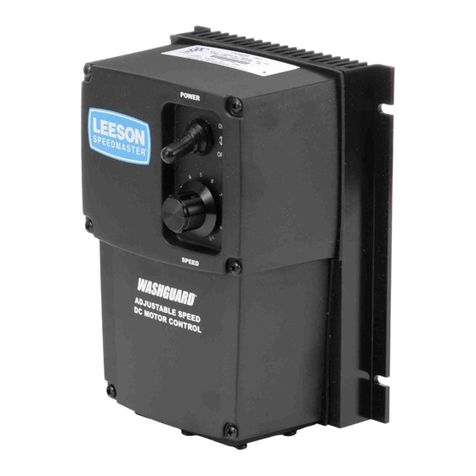
Leeson
Leeson SPEEDMASTER WASHGUARD 174102 Operation manual
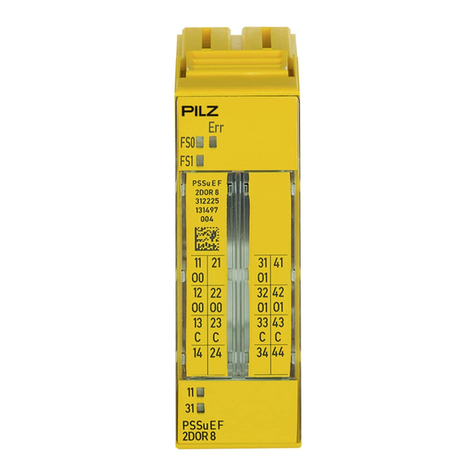
Pilz
Pilz PSSu E F 2DOR 8 operating manual

Mente Marine
Mente Marine ACS R/RP user manual
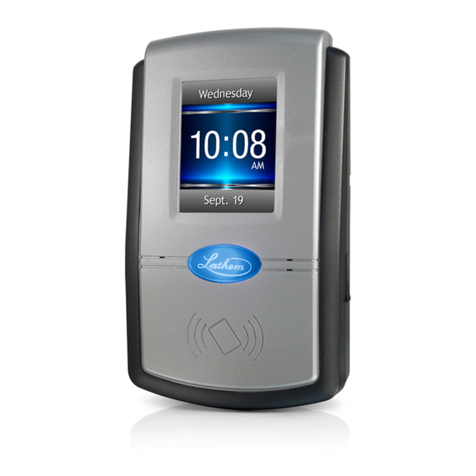
Lathem
Lathem PC600 Series quick start guide

Siemens
Siemens SIMATIC 6ES7673-2CC40-0YA0 Hardware Installation and Operating Manual
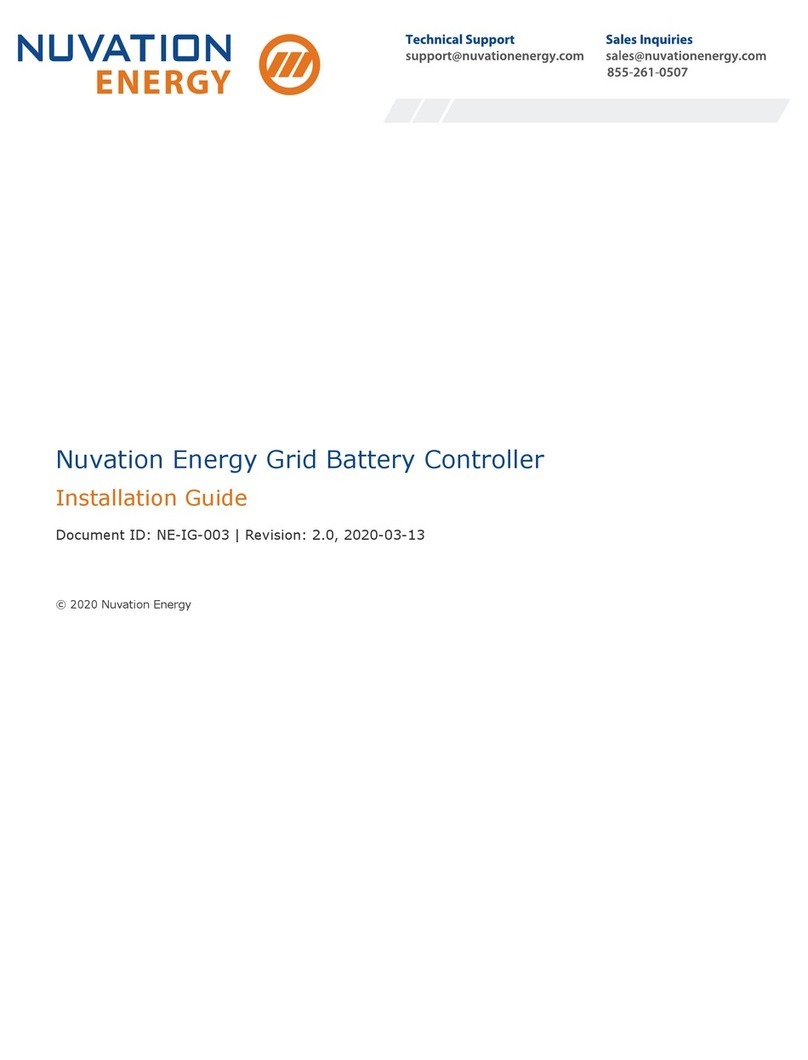
Nuvation Energy
Nuvation Energy Grid Battery Controller installation guide
